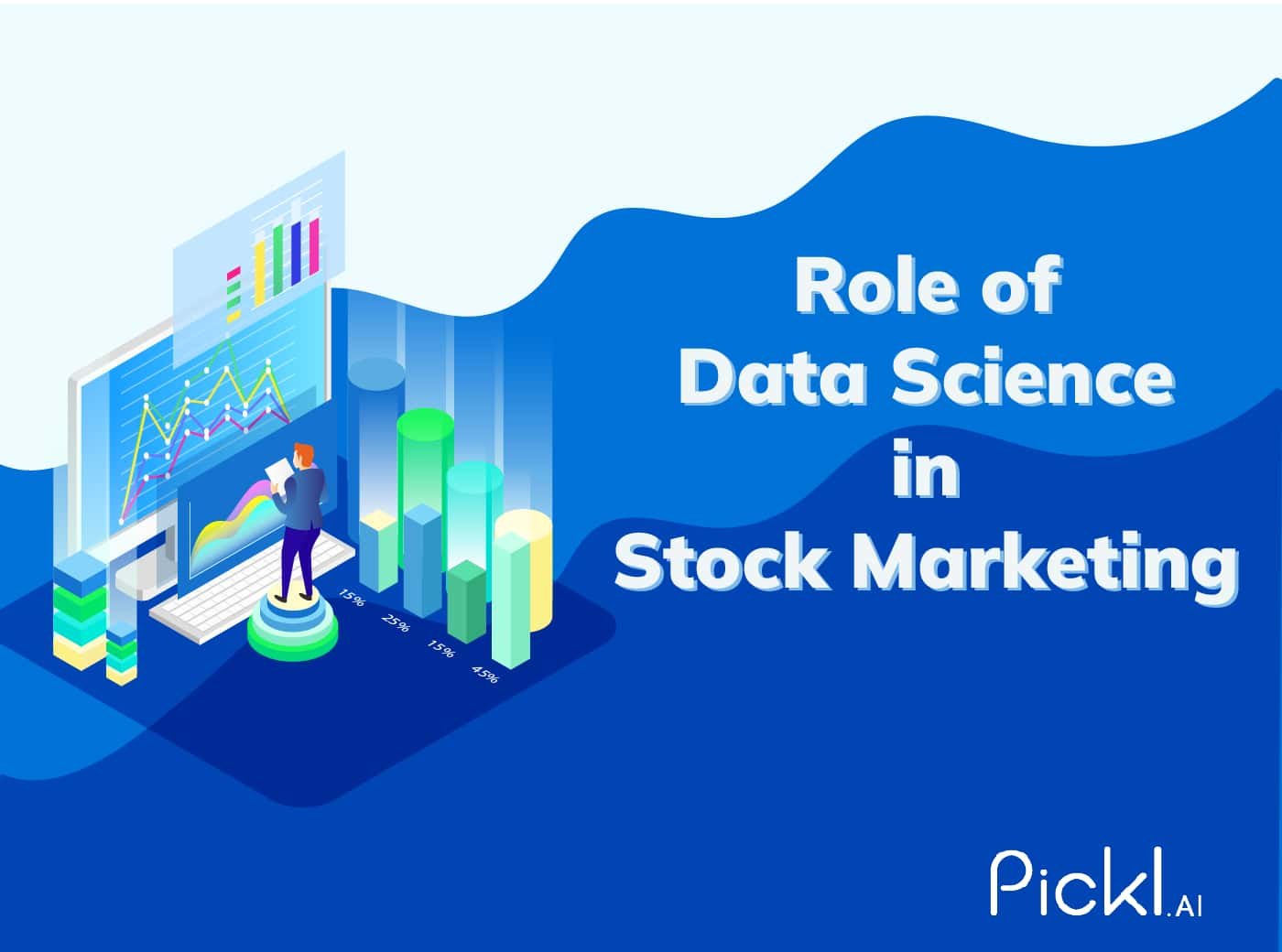In today’s fast-paced financial landscape, where every second counts, making informed decisions in the stock market is crucial. Investors and traders are constantly seeking ways to gain an edge, and this is where the role of Data Science in stock market analysis comes in.
Data Science, with its powerful tools and techniques, has revolutionized the stock market, enabling professionals to analyze vast amounts of data, predict market trends, and make more accurate investment choices. This article delves into the pivotal role of Data Science in stock market analysis, discussing key takeaways that highlight its significance.
Key Takeaways
Data-Driven Decision Making
The role of Data Science in stock market analysis is growing. It empowers investors and traders with data-driven decision-making capabilities. Traditional methods of stock analysis often relied on gut feelings or historical trends. However, Data Science introduces a scientific approach by analyzing historical data, market sentiment, economic indicators, and other relevant factors.
By extracting insights from these datasets, professionals can make more informed investment decisions, reducing the risk associated with emotional biases.
Predictive Analytics
One of the most remarkable aspects of Data Science in stock market analysis is its predictive capabilities. Through sophisticated algorithms and Machine Learning models, data scientists can predict stock price movements with a degree of accuracy that was previously unthinkable.
These predictive models take into account a myriad of variables, such as historical stock prices, trading volumes, market news sentiment, and macroeconomic indicators. As a result, investors can anticipate market trends and adjust their strategies accordingly.
Algorithmic Trading
Algorithmic trading, also known as algo-trading, has gained significant traction with the integration of Data Science. Algo trading involves the use of pre-defined rules and algorithms to automate trading processes.
By leveraging Data Science techniques, traders can design algorithms that react to real-time market data, execute trades, and manage risk without human intervention. This approach not only enhances the speed of trading but also reduces the impact of emotional decisions on investment outcomes.
Risk Management
In the world of investments, risk management is paramount. Data Science equips investors with tools to assess and mitigate risks effectively. By analyzing historical data and market volatility patterns, data scientists can develop risk models that provide insights into potential downside scenarios.
These models assist investors in making informed choices about portfolio diversification, hedging strategies, and position sizing, thereby safeguarding their investments against unexpected market movements.
Personalized Investment Strategies
Every investor has unique financial goals, risk tolerance, and investment preferences. Data Science enables the creation of personalized investment strategies tailored to individual needs.
By analyzing an investor’s financial profile, past investment behavior, and market outlook, data scientists can recommend portfolios that align with the investor’s objectives. This personalized approach enhances the likelihood of achieving financial goals while minimizing unnecessary exposure to risk.
How to Use Data Science in Stock Market Analysis
As the significance of Data Science in stock market analysis continues to grow, individuals and professionals are seeking ways to harness its power effectively. Here are some practical steps to use Data Science in stock market analysis:
Education and Training
To leverage Data Science effectively in stock market analysis, it’s essential to acquire the necessary knowledge and skills. Consider enrolling in a “Data Science for stock market” course, which can provide insights into the specific techniques, tools, and datasets relevant to financial markets.
Many online platforms offer comprehensive courses that cover topics such as stock market data analysis using Python, Machine Learning for stock price prediction, and more.
Project-based Learning
Hands-on experience is invaluable when it comes to Data Science. Undertake a stock market analysis and prediction project using real-world data. You can explore platforms like GitHub, where you can find open-source projects related to stock market prediction using Machine Learning.
By working on such projects, you’ll gain practical experience in data preprocessing, feature engineering, model building, and evaluation.
Python and Machine Learning Libraries
Python is a popular programming language in the Data Science community due to its versatility and extensive libraries. Utilize libraries such as Pandas for data manipulation, NumPy for numerical computations, and Scikit-Learn for Machine Learning tasks.
Leverage these libraries to preprocess stock market data, engineer relevant features, and train predictive models.
Data Collection and Cleaning
A significant part of Data Science involves data collection and cleaning. Gather historical stock price data, market news sentiment data, and economic indicators from reliable sources.
Ensure the data is cleaned, formatted, and free from inconsistencies, as accurate predictions heavily depend on the quality of input data.
Model Selection and Evaluation
Experiment with different Machine Learning algorithms for stock price prediction, such as linear regression, decision trees, random forests, and neural networks. Remember that no single model fits all scenarios, so it’s essential to evaluate the performance of each model using appropriate metrics like Mean Absolute Error (MAE) or Root Mean Squared Error (RMSE).
Real-World Examples of the Role of Data Science in Stock Market Analysis
Certainly, here are some real-world examples of how Data Science is being used in stock market analysis:
Algorithmic Trading
Algorithmic trading, driven by Data Science techniques, has become a prominent force in the stock market. Firms and individual traders use algorithms to automate trades based on predefined criteria and market data.
These algorithms can execute trades at speeds and volumes that are impossible for human traders. For instance, High-Frequency Trading (HFT) firms utilize complex algorithms that analyze market data in real-time to identify price discrepancies and execute trades within milliseconds.
Sentiment Analysis
Data Science techniques are employed to analyze the sentiment of news articles, social media posts, and other textual sources to gauge market sentiment. Natural Language Processing (NLP) algorithms process text data to determine whether news sentiment is positive, negative, or neutral.
This sentiment analysis provides insights into how news events and public opinion might impact stock prices. For example, if news sentiment around a certain company becomes overwhelmingly negative, it could trigger a sell-off.
Predictive Analytics
Predictive models built using Machine Learning algorithms are used to forecast stock price movements. These models take into account historical price data, trading volumes, economic indicators, and other relevant factors to make predictions about future price trends.
Firms like Two Sigma and Renaissance Technologies are known for using complex predictive models to generate returns.
Portfolio Optimization
Data Science is used to optimize investment portfolios by finding the right balance between risk and return. Modern portfolio theory uses historical data to create portfolios that maximize returns for a given level of risk.
Data-driven techniques help investors identify the optimal allocation of assets to achieve their financial goals.
Pattern Recognition
Data Science is employed to identify and exploit patterns in stock price movements. Technical analysts have long used charts and patterns to predict price movements.
Data Science takes this further by analyzing vast amounts of historical data to identify patterns that might not be apparent to human analysts. These patterns might indicate trends, reversals, or other price movements.
Market Microstructure Analysis
Data Science techniques are used to study market microstructure, which involves analyzing the behavior of market participants, order flows, and trading volumes.
This analysis helps traders understand how the market operates at a very detailed level and can provide insights into price movements, liquidity, and market impact.
Risk Management
Data Science plays a crucial role in assessing and managing risks in the stock market. Value at Risk (VaR) models use historical data to estimate the maximum potential loss that a portfolio could face over a given time horizon.
Stress testing and scenario analysis, driven by Data Science, help assess how a portfolio might perform under extreme market conditions.
Alternative Data Sources
Data Science has enabled the integration of alternative data sources, such as satellite imagery, credit card transactions, and supply chain data, into stock market analysis.
For example, analyzing satellite images of retail parking lots can provide insights into foot traffic and sales for certain companies, potentially impacting their stock prices.
These real-world examples showcase the diverse ways in which Data Science is transforming stock market analysis. By leveraging advanced techniques and vast datasets, investors, traders, and financial institutions can make more informed decisions, manage risks, and capitalize on market opportunities.
Conclusion
The role of Data Science in stock market analysis cannot be overstated. By embracing data-driven decision-making, predictive analytics, algorithmic trading, risk management, and personalized investment strategies, investors and traders can navigate the complexities of the stock market more effectively.
As the field of Data Science evolves, its impact on the financial industry will continue to grow, shaping the way professionals approach investments and maximize their returns. If you’re looking to enhance your stock market analysis skills, consider diving into the world of Data Science and exploring its transformative potential.
Ready to Master Data Science for the Stock Market? Join Pickl.AI’s Cutting-Edge Course Today!
Unleash the power of data science in the world of stock market analysis with Pickl.AI’s comprehensive Data Science course. Discover how to transform raw data into valuable insights, predict market trends, and make informed investment decisions that outshine the competition.
Whether you’re an aspiring trader, seasoned investor, or curious enthusiast, our course will equip you with the skills to thrive in today’s dynamic financial landscape.











